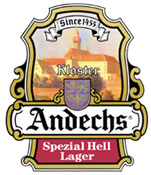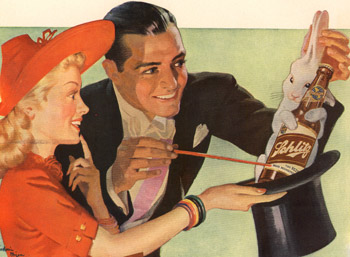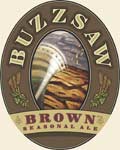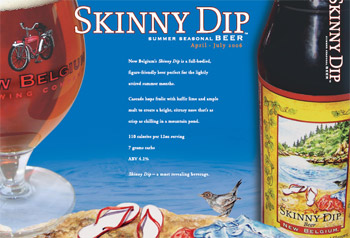Working for the Anheuser-Busch breweries in Columbus, Ohio, and Merrimack, N.H., has been a little more fun recently.
Why? Burnin’ Helles, Leaf Peeper Pils and Old Eyepopper for starters.
The idea to have a contest that lets customers pick what might on tap in their local pub is hardly new, and the idea for this one might have come from the marketing department but A-B’s www.originalbeers.com promotion has involved brewery employees just as much any similar program would at a small-batch brewery.
This is where things stand now: Residents in New England and Ohio can log onto www.originalbeers.com to cast their vote for a beer they figure they want to drink.
In Ohio the choices include: Burnin’ Helles, Racer Snake Red and Old Eyepopper. In New England they are: Devil’s Hop Yard IPA, Stone Face Ale and Leaf Peeper Pils. The names and beer styles were created by local employees at the Columbus breweries. Voting continues through Sunday, the winning beers will be brewed at the Columbus and Merrimack breweries, and then go on tap in their respective regions June 26.
Most voters will probably make their decision based only on the online descriptions, but batches of each of the beers were brewed in A-B’s St. Louis pilot brewery and are available for sampling.
At Merrimack, more than 500 brewery employees and local distributors contributed ideas, which included suggesting a beer style and a beer name. Then a committee of 12, chosen from different departments such as accounting or packaging, picked the three beers and formulated recipes.
“This was a fun project,” said assistant brewmaster Mitch Steele. “We put up a spread sheet, bounced around ideas about hops, hopping schedules, malt, and so on.”
All three choices in New England are ales. “We’ve wanted to brew more ales out of Merrimack,” Steele said. One simple reason is that Bare Knuckle Stout is brewed in Merrimack, and it’s easier to keep yeast healthy when it is put to work regularly.
Merrimack was a logical choice because of the strong craft brewing scene in the Northeast and because the brewery can produce smaller batch sizes (400 barrels versus 1,000 and more at most A-B breweries). “I think part of it was the success of the seasonal beers (released beginning last fall). The idea of doing some regional beers has been around for a while,” Steele said.
Steele formerly worked in the specialty beer group, formulating recipes that were sold under the Michelob Specialty and A-B American Originals brands. Included were many recipes that never reached the public (although they made the company picnic more fun).
“We tried to get an IPA out there,” Steele said, thinking back to 1997. Now New England customers can vote for Devil’s Hopyard IPA, which is hopped with Cascade, Columbus and Palisades to the tune of 60 IBU.
“I think we are a bit more adventurous than nine years ago, don’t you?” Steele said.
“We’re trying to provide an alternative for our core drinker.”
Who wouldn’t notice the similarity between the Devil’s Hopyard IPA name and that of the immensely popular Victory HopDevil IPA from Downington, Pa.?
We’d rather A-B picked a different name, but it’s also our opinion that members of the HopDevil Nation aren’t likely to jump ship based on a name. Meanwhile, if the Devil’s Hopyard is the voters’ choice, a few A-B loyalists have are going to have an opportunity to broaden their beer horizons. And that’s a good thing.

 Distinguished Brand International is set to begin importing Andechs Spezial Hell Lager this month, although it will be from Canada rather than Germany. DBI explains: “Andechs Spezial Hell is being brewed under direct supervision of the Benedictines and in strict accordance with their purity law called, Reinheitsgebot, at Brick Brewing Company in Waterloo, Ontario. To optimize Andechs special flavor, it will be available in 20 liter kegs (5.28 gallons). The small kegs reduce oxidation, helping to ensure Andechs superior flavor.”
Distinguished Brand International is set to begin importing Andechs Spezial Hell Lager this month, although it will be from Canada rather than Germany. DBI explains: “Andechs Spezial Hell is being brewed under direct supervision of the Benedictines and in strict accordance with their purity law called, Reinheitsgebot, at Brick Brewing Company in Waterloo, Ontario. To optimize Andechs special flavor, it will be available in 20 liter kegs (5.28 gallons). The small kegs reduce oxidation, helping to ensure Andechs superior flavor.” Heineken has just kicked off a national advertising campaign to support its off-premise launch of
Heineken has just kicked off a national advertising campaign to support its off-premise launch of 
 BuzzSaw Brown. Deschutes Brewery calls its newest seasonal “an easy-drinking beer that is refreshing after a hard day’s work.” A modest 4.8%, it qualifies as something of a session beer but has a soothing restorative quality. Packed with a full range of deep rich flavors and brimming with nutty roastiness. Gentle bitterness nicely balances the caramel sweetness. 4.8%, 30 IBU.
BuzzSaw Brown. Deschutes Brewery calls its newest seasonal “an easy-drinking beer that is refreshing after a hard day’s work.” A modest 4.8%, it qualifies as something of a session beer but has a soothing restorative quality. Packed with a full range of deep rich flavors and brimming with nutty roastiness. Gentle bitterness nicely balances the caramel sweetness. 4.8%, 30 IBU.